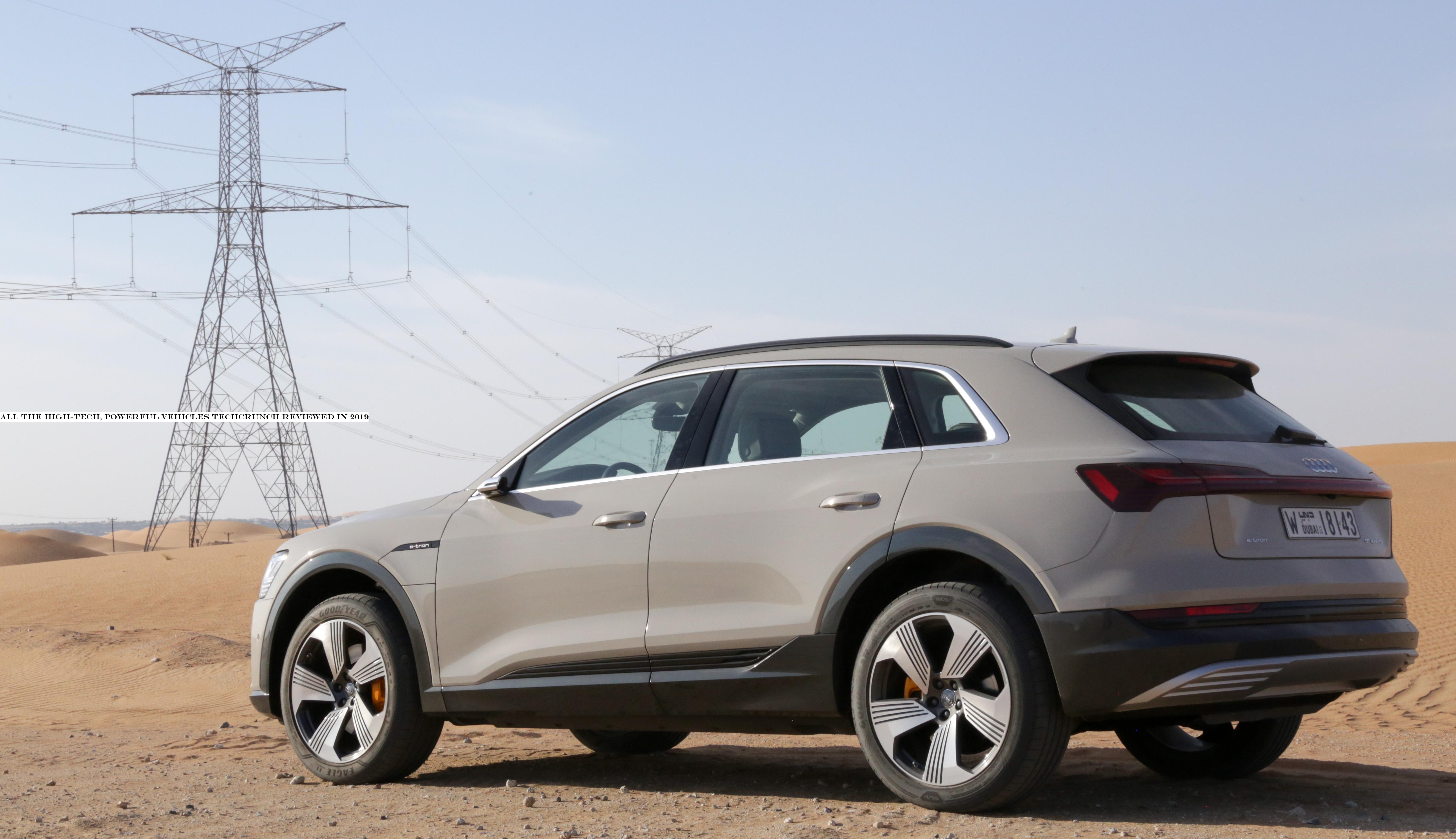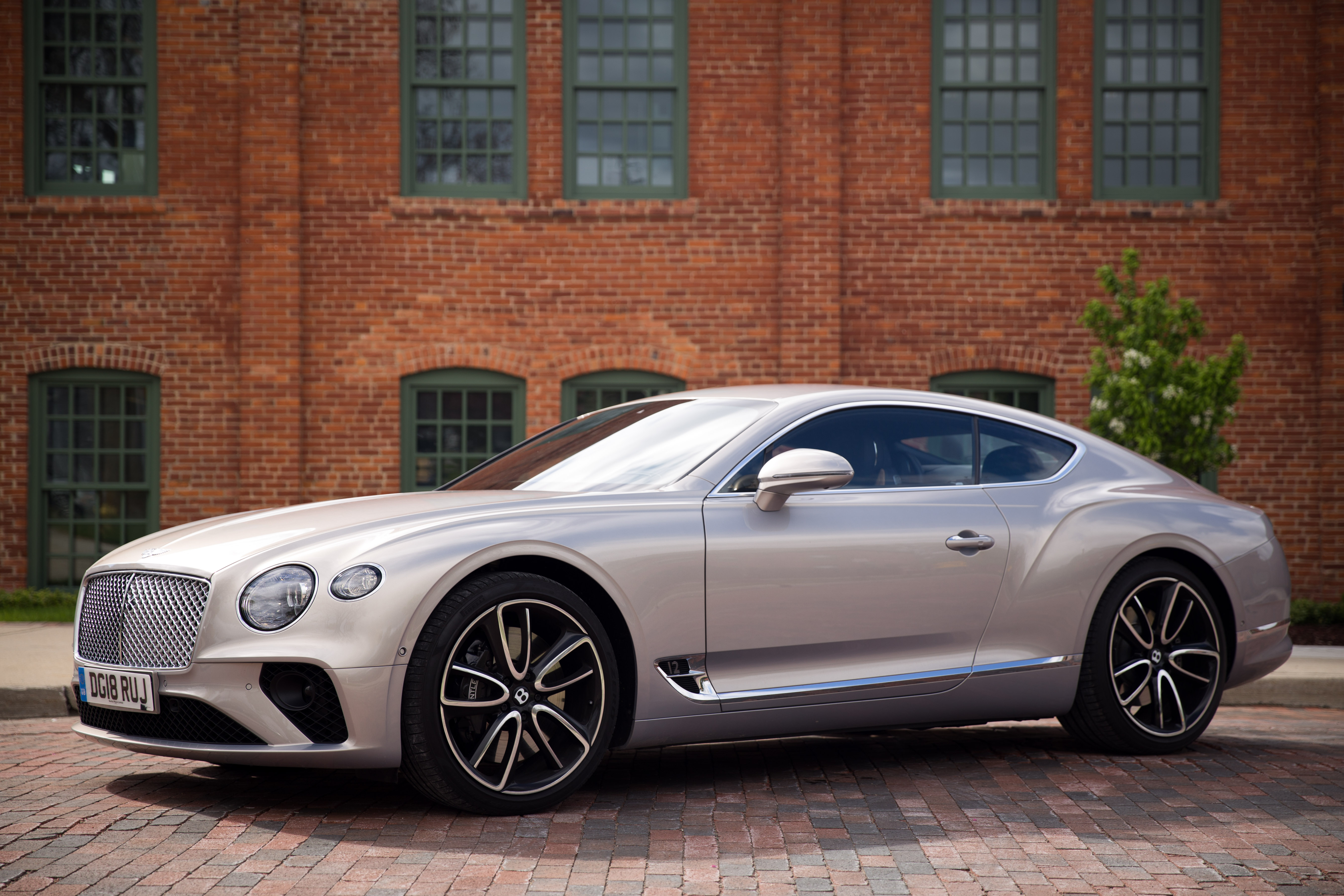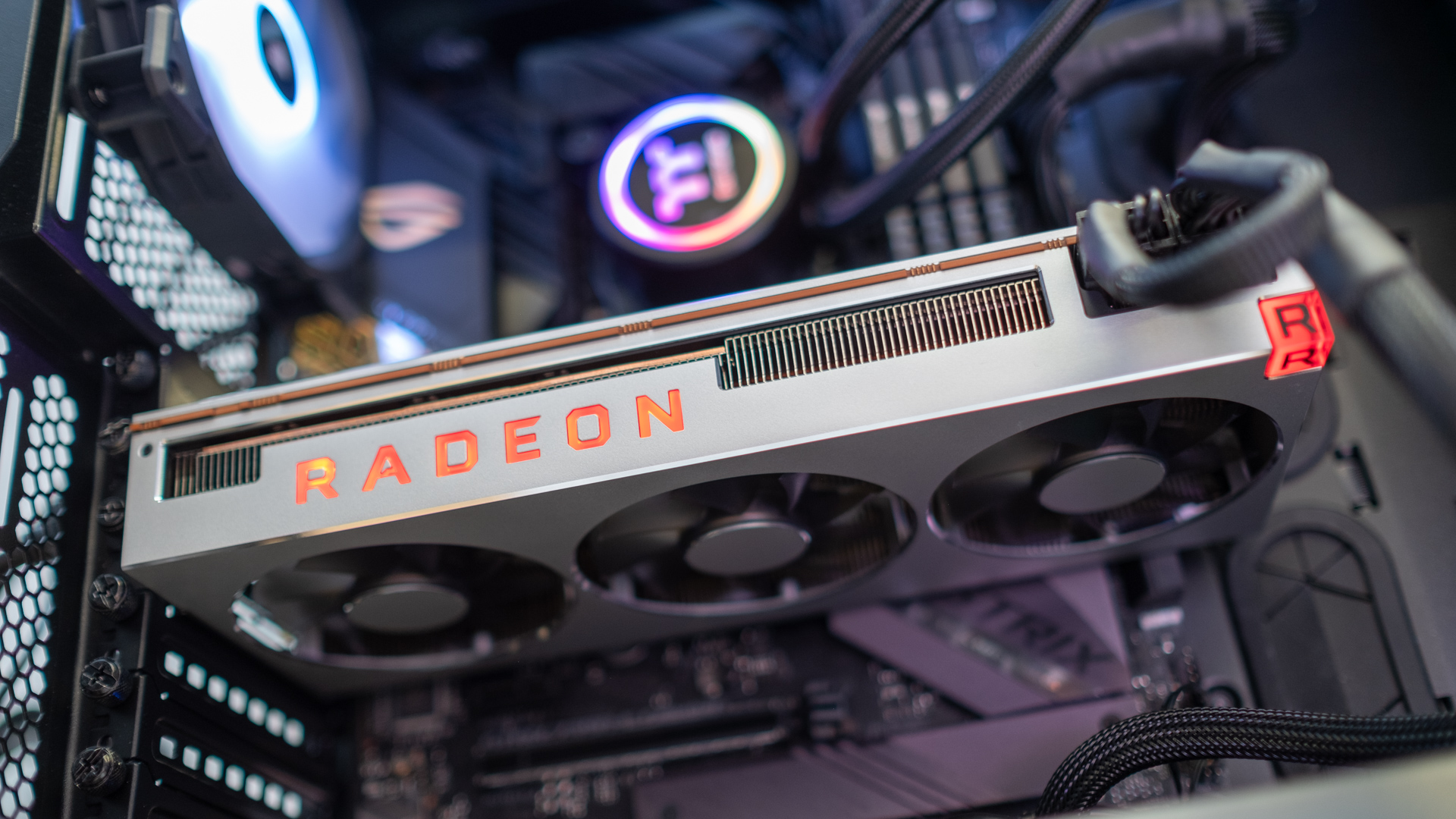Technology
TechCrunch occasionally reviews cars. Why? Vehicles are some of the most complex, technical consumer electronics available. Italways been that way. Vehicles, especially those available for the consumer, are the culmination of bleeding-edge advancements in computing, manufacturing, and material sciences. And some can go fast — zoom zoom.
Over the past 12 months, we&ve looked at a handful of vehicles from ultra-luxury to the revival of classic muscle cars. Itbeen a fun year full of road trips and burnouts.

In the last weeks of 2018, we drove Audi first mass-produced electric vehicle. The familiar e-tron SUV.
I spent a day in an Audi e-tron and drove it hundreds of miles over Abu Dhabiperfect tarmac, around winding mountain roads and through sand-covered desert passes. The e-tron performs precisely how a buyer expects a mid-size Audi SUV to perform. On the road, the e-tron is eager and quiet, while off the road, over rocks, and through deep sand, itsturdy and surefooted.
Read the review here.

A few months later, we got an Audi RS 5 Sportback for a week. It was returned with significantly thinner tires.
This five-door sedan is raw and unhinged, and therean unnatural brutality under the numerous electronic systems. Its twin-turbo 2.9L power plant roars while the Audi all-wheel drive system keeps the rubber on the tarmac. Itinsane, and like most vacations, itlovely to visit, but I wouldn&t want to live with the RS 5.
Read the review here.

At the end of Spring, a 2019 Bentley Continental GT blew us away.
The machine glides over the road, powered by a mechanical symphony performing under the hood. The W12 engine is a dying breed, and ita shame. Itstunning in its performance. This is a 200 mph vehicle, but I didn&t hit those speeds. What surprised me the most is that I didn&t need to go fast. The new Continental GT is thrilling in a way that doesn&t require speed. Itlike a great set of speakers or exclusive liquor. Quality over quantity, and in this mechanical form, the quality is stunning.
Read the review here.

In late May, we drove Audi2019 Q8 from Michigan to New York City and back. To the passengers, it was comfortable. For the driver (me), it was unpleasant.
Yet after spending a lot of time in the Q8, I found it backwards. Most crossovers provide the comfort of a sedan with the utility of an SUV. This one has the rough comfort of an SUV with the limited utility of a sedan. Worse yet, driving the Q8 around town can be a frustrating experience.
Read the review here.

The BMW i8 is a long for this world, so we took it out for one last spin, several years after reviewing it just after it was released.
The BMW i8 is just a stepping stone in BMWhistory. An oddball. Ita limited-edition vehicle to try out new technology. From what I can tell, BMW never positioned the i8 as a top seller or market leader. It was an engineerplayground. I love it.
Read the review here.

This fall, we went to Las Vegas to get the first taste of Fordlatest GT500. Itexhilarating and yet manageable.
During my short time with the 2020 GT500, I never felt overwhelmed with power when driving it on city streets. The 2020 GT500 is an exercise in controlled restraint. Somehow this 760 HP Ford can hit 60 mph in 3.3 seconds and still be easy to putz around town. Itsurprising and a testament to the advances made within Dearborn.
Read the review here.

Supercars are often an exercise in excess, and yet the McLaren Senna GTR is something different. Ita testament to how McLaren operates.
Sliding into the driverseat, I feel at home. The cockpit is purposeful. The track was cold with some damp spots, and the GTR is a stiff, lightweight race car with immense power on giant slick tires. Conventional wisdom would suggest the driver — me in this case — should slowly work up to speed in these otherwise treacherous conditions. However, the best way to get the car to work is to get the temperature in the tires by leaning on it a bit right away. Bell sent me out in full &Race& settings for both the engine and electronic traction and stability controls. Within a few corners — and before the end of the lap — I had a good feel for the tuning of the ABS, TC, and ESC, which were all intuitive and minimally invasive.
Read the review here.
Quick thoughts on other cars we drove this year.
2020 BMW M850i xDrive Coupe A grand tourer for the modest millionaire. With all-wheel drive, a glorious engine, and heated armrests, the 850i is exciting and comfortable anywhere.
2019 Ford GT350 Forget the GT500. The GT350, with a standard gearbox and naturally aspirated 5.2L V8, is a pony car that gives the driver more control and more thrills than its more expensive, supercharged cousin.
2020 BMW M2 Competition Coupe This small BMW coupe is perfectly balanced. Itpowerful, controllable, and, during our week with it, gave endless thrills (and donuts). This was my favorite car this year.
2019 Ford Raptor Need a pickup thatfaster than a sports car? You probably don&t, but if so, we discovered the Raptor was capable and enjoyable if not a bit unwieldy in traffic thanks to its wide body.
- Details
- Category: Technology
Read more: All the high-tech, powerful vehicles TechCrunch reviewed in 2019
Write comment (96 Comments)Welcome back to Startups Weekly, a weekend newsletter that dives into the weeknoteworthy startups and venture capital news. Before I jump into todaytopic, letcatch up a bit. Last week, I wrote about the defining moments of VC in 2019. Before that, I noted some thoughts on U.S. VC activity in Europe.
Remember, you can send me tips, suggestions and feedback to This email address is being protected from spambots. You need JavaScript enabled to view it. or on Twitter@KateClarkTweets. If you&re new, you can subscribe to Startups Weekly here.
2019lost startups

Startups perish for many reasons but thereone constant: this is an incredibly difficult business. Launching a successful company isn&t just a matter of drive and finding the right people (though both, clearly, are important). Doing well in this business requires the stars to align perfectly on a billion different things.
A cursory look at this yearbatch of companies doesn&t find any story quite as spectacular as last yearbig Theranos flameout, which gave us a best-selling book, documentary, podcast series and upcoming Adam McKay/Jennifer Lawrence film. Some, like MoviePass, however, may have come close.
And for every Theranos, there are dozens of stories of hardworking founders with promising products that simply couldn&t make it to the finish line. Therealso room for debate about what is and isn&t a startup. For our purposes, we&re focusing here on independent startups, not digital initiatives from larger companies — though in at least one case, the startup was acquired by a larger company before shutting down.
So without further ado, here are some of the biggest and most fascinating startups that closed up shop in 2019.
Subscribe to Extra Crunch
We have a holiday promotion going on right now with annual Extra Crunch membership. You can get an annual membership for only $79 (normally $150/year). This offer is available exclusively through this link, and the offer expires at the end of the month.
- Details
- Category: Technology
Read more: Startups Weekly: 2019’s dead startups
Write comment (93 Comments)
On Friday, China announced that it would complete its competitor to the U.S.-operated global positioning system network by the first half of next year, increasing the pace of its decoupling from U.S. technologies.
ChinaBeidou network of satellites — named after the &Big Dipper& constellation — will be the first service to compete with the U.S. Air Forceglobal positioning system and already has a potentially massive user base since over 70% of Chinese smartphones are now ready to use its positioning services, according to a report in the Nikkei Asian Review.
The Beidou network is integral to Chinalongterm plans to dominate the next generation of telecommunications services and — coupled with Chinaadvances in fifth-generation wireless communications technology — represents as significant challenge to the U.S. hegemony over telecommunications infrastructure.
China plans to launch the final two satellites needed to make the Beidou system operational by June 2020, according to a statement from the projectdirector, Ran Chengqi quoted by The Associated Press.
Envisioning a system where Chinaglobal positioning system and fifth generation wireless networking technologies work in tandem, China could command a lionshare of the market for new telecommunications services.
A test of how these technologies could work in tandem is being developed in Wuhan, where both 5G and Beidoumapping technologies will be used to create an autonomous vehicle testbed on a 28 kilometer stretch of road.
Beidou already has 120 partners signed up to work with the service — all linked to agreements made under Chinaexpanding Belt and Road infrastructure initiative, according to Nikkei.
Chinese smartphone manufacturers accounted for over 40% of sales worldwide as of the second quarter of 2019, the latest data from Counterpoint Research shows.
ChinaGPS href="https://www.bbc.com/news/technology-45471959"> rolled out in phases beginning with a domestic service launched in 2000 and a regional service for Asia Pacific coming online in 2012.
By 2020 the nationnetwork of 35 satellites will exceed the U.S. system thatcurrently in place.
&There is certainly an aspect of this that is about expanding influence, but part of it is likely also about economic security,& Alexandra Stickings, from the Royal United Services Institute for Defense and Security Studies, told the BBClast year. &The main advantage of having your own system is security of access, in the sense that you are not relying on another country to provide it. The US could deny users access over certain areas, for example in times of conflict.&
Space is an area of strategic importance for the Chinese government. The country has already achieved significant milestones including quantum communications powered by its space capabilities and the first human exploration of the far side of the moon. And current plans are in place for China to send a probe to Mars in 2020 as it prepares to complete a space station by 2022.
Itagainst this backdrop of increasing activity in space — even as tensions mount terrestrially — that the U.S. created the latest branch of its armed forces under the moniker of the Space Force.
Citing Chinese state media, the Nikkei Times reported that the value of goods and services tied to Beidou will reach $57 billion by 2020. The figure itself is nebulous, but points to the kind of economic power Beijing hopes to yield through the new satellite positioning service.
The development of these alternative internet realities matters a great deal.
As Eric Schmidt, the former chief executive officer of Google — and no stranger to the operations of Chinese technology companies — noted last year at a private dinner (first reported by CNBC):
&[The] Chinese Internet is a greater percentage of the GDP of China, which is a big number, than the same percentage of the US, which is also a big number. If you think of China as like ‘Oh yeah, they&re good with the Internet,& you&re missing the point. Globalization means that they get to play too. I think you&re going to see fantastic leadership in products and services from China. Therea real danger that along with those products and services comes a different leadership regime from government, with censorship, controls, etc. Look at the way BRI works & their Belt and Road Initiative, which involves 60-ish countries & itperfectly possible those countries will begin to take on the infrastructure that China has with some loss of freedom.&
- Details
- Category: Technology


AMD’s EPYC processors have, by and large, been very well received by server vendors and users and if you head over to eBay, you will see a number of server processors being sold for dirt-cheap prices, a very enticing way to build a powerful workstation on a budget.
At the time of writing, the cheapest 32-core processor worth buying (outside of
- Details
- Category: Technology
Read more: This is the cheapest 32-core CPU worth buying right now and it is EPYC
Write comment (98 Comments)
At the beginning of 2019, AMD had a lot to respond to. Nvidia was still the king of the graphics hill with its RTX 20-series, and Intel similarly had the CPU space covered with many of the best processors thanks to powerful single-core performance.
But, this has been a year for change, and AMD embraced that. AMD launched a slew of new products this
- Details
- Category: Technology
Read more: AMD in 2019: Big things in small packages
Write comment (93 Comments)
If you like OLED TVs but haven’t loved the low peak brightness of the panels, you’ll definitely want to tune in to CES 2020 - especially to what TCL is doing this year.
The Shenzhen-based TV manufacturer announced that it’s bringing its latest crop of Mini-LED TVs to the show and they could pose a real threat to LG’s OLED dominance.
Mini-LED TVs,
- Details
- Category: Technology
Read more: TCL will challenge OLED dominance at CES 2020 with its new Mini-LED TVs
Write comment (91 Comments)Page 31 of 5614

 5
5